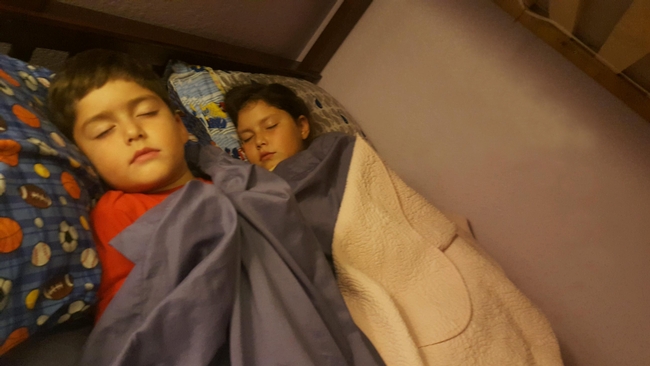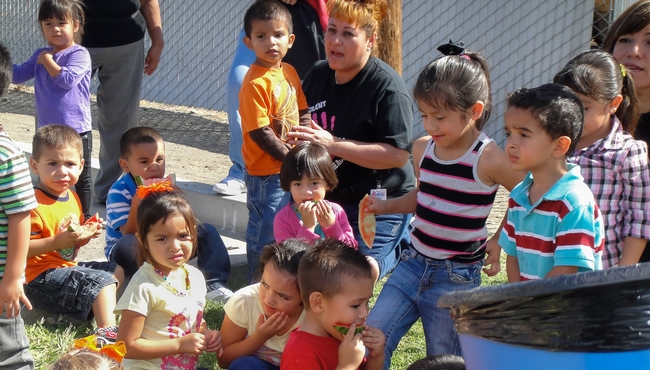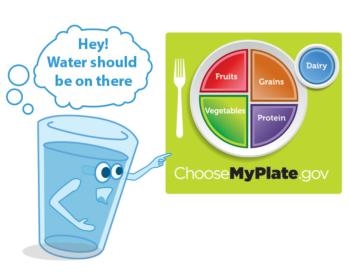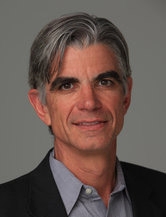Posts Tagged: childhood obesity
Does sleep affect child obesity?
One in five Mexican-American children is obese, according to national statistics. While scientists agree that diet and exercise play a role in obesity, studies also suggest that children who don't get enough sleep may also be at increased risk for obesity. Does this mean that children who don't get enough sleep are more likely to become obese due to poor eating habits and being less physically active?
The National Institutes of Health has awarded $895,620 to Suzanna Martinez, Ph.D., assistant researcher for UC Nutrition Policy Institute (NPI) in the UC Division of Agriculture and Natural Resources, to try to answer that question. This will be the first pediatric study to examine health behaviors that link sleep to obesity in Mexican-American children.
Studies have shown that adults who are short on sleep may experience a change in metabolism and hormones, causing the person to eat more and to be more sedentary the following day.
To explore how sleep affects child obesity, Martinez will examine social and cultural factors that may impact Mexican-American children's sleep and, in turn, how sleep affects their diet and physical activity.
Martinez hopes to provide guidance for which behaviors to target to prevent obesity.
“Some researchers just focus on diet, some researchers just focus on physical activity, while other researchers say it's all about the environment so we have to improve the environment in terms of food environment and opportunities to be active,” Martinez said. “There's very little research that tries to target all three aspects of health behavior – sleep, diet and physical activity – because there are so many factors to consider. We have to know which will make the biggest impact on obesity prevention. Is it sleep, diet or physical activity or a combination of all three?” Currently, programs are heavily focused on diet and/or physical activity.
Social and cultural factors may affect sleep
Martinez is essentially combining three different studies into one to evaluate the context of sleep and how it impacts obesity. The five-year study will occur in two phases.
She'll begin by looking at the culture, environment and socioeconomic status of the Mexican American families to see which factors may relate to sleep duration.
For example, Martinez said, “If less acculturated Mexican-American parents have stricter or earlier bedtimes for their children, is that protective for getting optimal sleep, less protective or does it even matter?”
Living in crowded housing or in neighborhoods with high crime, homelessness and drugs can impact sleep for urban Latino families, Martinez learned from interviews with Latino parents for a study she published in 2015.
Sleep and physical activity and diet
The second phase of the study will involve evaluating the sleep duration of 40 Mexican American kids, ages 8 to 10, in the San Francisco Bay Area over two summers.
To record their sleep and physical activity, the participating kids will wear accelerometers during the day and while they sleep. The small, pedometer-like devices are worn on a belt around the hip.
For the first week of the three-week study, the children will be asked to get their normal sleep. During the second week, half of the children will be asked to sleep for less than 8 hours and the other half will be asked to sleep at least 10 hours. The third week, the two groups will switch over to the other sleep schedule.
Their diets will be measured using 24-hour dietary recalls. On Friday and Saturday, children will be asked what he or she ate the day before (Thursday and Friday). Starting with breakfast, the children will report what they ate and drank for meals and any snacks.
Martinez will evaluate whether healthy sleep or restricted sleep the previous night impacts the children's diet and physical activity the next day.
“With the crossover study, we will be able to see how kids compare when they get their usual sleep, healthy sleep or not enough sleep and how that impacts how much they eat and how much they move the next day,” she said.
No U.S. sleep guidelines
To maintain a healthy weight, U.S. Office of Disease Prevention and Health Promotion recommends that children get at least 30 minutes of physical activity daily and the Dietary Guidelines for America recommend that children eat a nutrient-dense and calorically balanced diet. The government office currently has no national sleep guidelines for Americans.
In a 2014 study, Martinez found that 82 percent of Mexican-American children ages 8 to 10 obtained less than the 10 to 11 hours of sleep the National Sleep Foundation recommended before 2015. Under the network of sleep researchers' new sleep recommendation of 9 to 11 hours for this age group, 20 percent of children received less than adequate sleep.
“There needs to be more research on sleep duration before we can say, ‘Sleeping this amount of time will help prevent obesity,'” Martinez said.
If her hunch is correct, promoting optimal sleep (at least 10 hours for school-age children) may be an effective way to reduce childhood obesity, and understanding the role of culture in obesity among Mexican-American children who have some of the highest rates obesity will be a key to designing effective solutions.
Research has shown that obesity contributes to numerous lifelong health problems, including heart disease, stroke, diabetes and high blood pressure. One in four overweight children become obese as an adult, and diseases like diabetes are presenting earlier than adulthood. National data show that 14 percent of white children are classified as obese, while 21 percent of Latino children are obese. With Latino children at increased risk, Martinez is committed to finding the causes of this disparity and to develop effective ways to reduce obesity among Mexican-American children.
This child obesity study is funded by a K01 Career Development Award from the National Institutes of Health National Heart, Lung and Blood Institute. Martinez has also been accepted into the K Scholars Program at UC San Francisco, which will provide her with peer support and mentorship to conduct the study.
NPI study: Law improves beverage environment in California childcare
In 2008 and 2012, NPI researchers conducted a survey of more than 400 randomly selected California licensed childcare facilities to look at beverages in childcare before and after California's Healthy Beverages in Child Care Act (AB 2084) took effect in January 2012. Under this law, only fat-free or low-fat (1 percent) unsweetened, plain milk for children two years of age or older is allowed, and no more than one serving per day of 100 percent juice. No sugary drinks are allowed at all. Also, drinking water must be readily available throughout the day, including at all meal, snack and play times.
NPI Director Lorrene Ritchie presented NPI's research findings on June 30 at the 8th Biennial Childhood Obesity Conference in San Diego. The NPI study found that the policy was effective at improving the beverage environment in California childcare. Provision of whole milk dropped from nearly 30 percent of childcare facilities in 2008 to less than 9 percent of facilities 2012. The provision of other beverages also improved. In 2008, 27 percent of facilities offered juice more than once a day, compared to just 20 percent in 2012. Facilities offering any sugar-sweetened beverages dropped from 7.6 percent in 2008 to 6.9 percent in 2012.
“We know the beverages children consume can put a child at risk for overweight and obesity,” said Ritchie. “The good news is that the healthy beverage standards did improve the beverage environment in California childcare. This law impacts potentially a million young children in our state.”
Despite the improved beverage environment, NPI found that only 60 percent of childcare facilities were aware of the law, and only 23 percent were in full compliance with all provisions.
“We need to do more to improve the beverage environment,” said Ritchie. “Based on our findings, we recommend that all childcare providers have access to nutrition training so that more understand and are able to comply with California's childcare beverage standards.”
The NPI study also looked at the effects of serving water at the table with meals and snacks. While this was not a provision of the California law, it is a best practice for teaching children to reach for water first for thirst. Putting water on the table did not have an impact on children's intake of milk and other foods, which was a common concern of providers caring for young children. However, the study found the law didn't make much of a difference in increasing children's water intake either.
“Simply serving water at the table with meals and snacks is not likely to interfere with intake of other healthy things,” said Ritchie. “But we don't know what would happen if water were provided in such a way as to substantively increase water intake.”
The University of California Global Food Initiative aims to put the world on a path to sustainably and nutritiously feed itself. By building on existing efforts and creating new collaborations among UC's 10 campuses, affiliated national laboratories and the Division of Agriculture and Natural Resources, the initiative will develop and export solutions for food security, health and sustainability throughout California, the United States and the world.
Follow your bliss (point)
Pulitzer Prize winning journalist Michael Moss is best known for coining the term “pink slime,” a reference to a meat additive that, thanks to Moss’s reporting, had a particularly bad PR day in 2009, when his high gross-out factor exposé was published in the New York Times. Products containing the cringe-inducing substance were subsequently banished from many grocery stores and schools.
In his most recent book, Salt, Sugar, Fat, Moss shined daylight on the happier sounding, but no less alarming phrase “bliss point,” a food industry term for the exact combination of those titular ingredients that stimulates our brain’s pleasure center and makes us — and our kids — crave these highly engineered products, from spaghetti sauce to Doritos.
The book is an investigative reporting piece that exposes the cold, hard scientific and business calculations made in the highly competitive food industry. But with his appearance as the opening keynote address at the 7th Biennial Childhood Obesity Conference, taking place in Long Beach, Calif., this week (June 18-20), Moss places his research squarely in the middle of its public-health context.
That context will be drawn by the country's preeminent experts on children’s health, who will present their current thinking on topics such as strategies for protecting children from food industry marketing tactics, how we can use health care reform to address childhood obesity, and how zoning and the built environment can have positive influence on the children’s health. The Prevention Institute’s Julie Sims will talk about innovative messaging that promotes policy change, like in this video:
The conference is designed for public health practitioners, researchers, health workers and educators, and nutrition professionals. They will be treated to an event bookended by two best-selling authors — Marion Nestle gives the closing keynote.
Nestle, an NYU professor and author of Food Politics and What to Eat, will close the conference with a talk on how a focus on policy can reverse current obesity trends. She will provide examples of how advocacy for environmental and policy changes that promote healthier diets and more physical activity “can be linked to positive sustainable action,” according the conference website.
Ultimately, the goal of the conference is nothing short of wiping out childhood obesity.
“Conferences such as this are crucial to creating and maintaining the movement to eliminate childhood obesity,” said Ces Murphy, conference planning chair and a project manager at California Project LEAN at the California Department of Public Health, one of the conference’s co-sponsors. “By sharing information, leveraging resources and creating partnerships that lead to positive sustainable change, we will accelerate the progress of reaching this goal.”
Pat Crawford, director of UC Berkeley’s Atkins Center for Weight and Health, is one of the founders of the conference and has an integral role in shaping it each year. Crawford says that the work is starting to pay off. "The effort to reverse the childhood obesity epidemic has expanded exponentially during the past few years, and we are beginning to see some of the positive outcomes from these efforts.”








